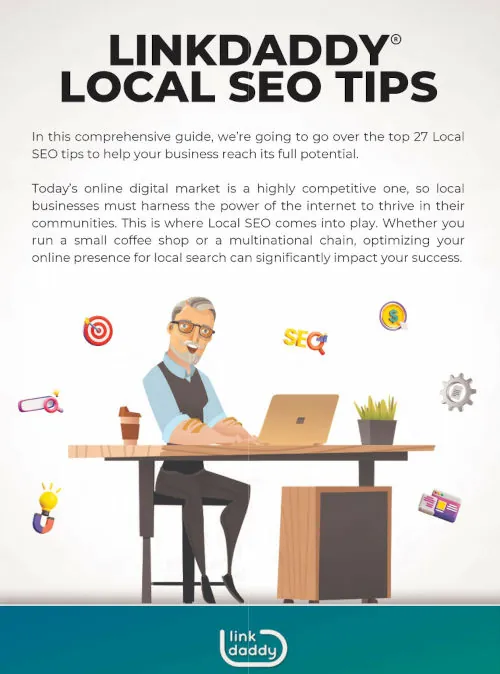
You’ve arrived in the fascinating and vibrant world of social media marketing! In today’s fast-paced digital realm, mastering social media marketing can be the key to unlocking your business’s true potential. Whether you’re a small startup or a well-established company, the power of social media cannot be ignored. With the right strategies and best practices, social media can help you engage your audience, build brand awareness, and drive traffic to your website.
The problem is that there are so many social media platforms to pick from that it can be difficult to know where to begin. Instagram, Facebook, Twitter, and LinkedIn—the options are endless. That’s where we come in! In this comprehensive guide, we’ll share the tips and tricks you need to know to master social media marketing and connect with your target audience.
First and foremost, it’s important to understand the fundamentals of social media. It’s all about interacting with your followers and establishing relationships with them. Your content should be educational, visually appealing, and easily shared. Great content is the foundation of any successful social media marketing campaign. From there, you can use various strategies to amplify your reach and increase engagement. These may include influencer marketing, paid advertising, and social media contests.
We’ll also dive into the best practices for each major platform, from creating engaging Instagram stories or Instagram reels to crafting attention-grabbing tweets. You’ll learn how to stay active on each platform and keep your audience engaged without oversaturating their feeds.
Finally, we’ll discuss how to measure your success and adjust your strategy accordingly. Using analytics tools, you can track your audience growth, engagement rate, and other important metrics to help you make informed decisions.
There’s no denying that social media marketing can be a game-changer for your business. With the right approach and techniques, you can build a loyal following and increase your bottom line. So join us as we explore tips and best practices for mastering social media marketing and taking your business to the next level!
Tip #1: Know Your Target Audience

Defining your target audience is the key to building a successful marketing strategy. By understanding the specific demographics and psychographics of your ideal customer, you will be able to tailor your messaging and offerings to resonate with them on a deeper level.
Start by analyzing your current customer base and identifying patterns in their behavior. What are their needs and pain points? What motivates them to make a purchase? Then, use this information to create buyer personas that represent your target audience. These personas should include details such as age, gender, income, education level, hobbies, values, and buying habits.
Once you have a clear picture of who you are targeting, you can create customized content, social media campaigns, and email marketing strategies to engage with them. By speaking directly to their interests and needs, you will build a loyal and engaged customer base that will continue to drive business growth. So take the time to define your target audience and make their needs the driving force behind your marketing initiatives.
Conducting audience research and creating buyer personas
Conducting audience research and creating buyer personas is the key to unlocking the full potential of your marketing strategy. With this approach, you gain powerful insights into the needs, preferences, behaviors, and motivations of your target audience. This enables you to tailor your messaging, products, and services to meet their specific needs and create a deeper emotional connection with them.
Through audience research, you can gather valuable data such as demographics, online behavior, and purchasing habits. This data can be used to create comprehensive buyer personas, which are detailed profiles of your ideal customers. With personas in hand, you can craft messaging that resonates with their unique desires, pain points, and interests.
By taking the time to conduct thorough audience research and create buyer personas, you can gain a competitive edge. You’ll be able to build trust with your audience, resulting in a higher conversion rate and greater customer loyalty. So, invest your time and resources in audience research and let the results speak for themselves!
Understanding audience demographics, interests, and behaviors
In today’s fast-paced digital age, understanding your audience has become more important than ever. Be it a business or a content creator, knowing the demographics, interests, and behaviors of your audience is crucial to succeeding in your respective field.
Comprehensive audience analysis can provide you with valuable insights regarding the age, gender, income, and other core attributes of your target audience. Such data can help you tailor your communications, marketing strategies, products, and services to cater to your audience’s specific needs and tastes. Knowing your audience’s interests can promote deeper engagement and unlock new opportunities for growth and creative innovation.
Behavioral data can reveal how your audience interacts with your online presence. It can illuminate what grabs their attention, how they engage with your brand, and to what extent they might be willing to spend. Such information can provide you with key indicators of success and areas to improve, leading to smarter decision-making and measurable ROI.
Ultimately, a thorough understanding of your audience’s demographics, interests, and behaviors can help you deliver more relevant, personalized, and impactful content that resonates with your audience, driving brand loyalty and boosting your bottom line.
Tip #2: Choosing the Right Social Media Platforms

Social media has become an integral part of our lives, connecting us with friends, family, and the world at large. There are various social media platforms that cater to different interests and needs. Let’s take a brief overview of some popular social media platforms.
- Facebook, the king of social media, has over 2.8 billion active users worldwide. It offers a wide range of features, from posting status updates, sharing photos and videos, joining groups, and even shopping online.
- Twitter is a quick-paced platform that enables people to exchange succinct thoughts and opinions. It has over 330 million active users. It’s the perfect place to catch up on news and current events in real time.
- Instagram is a visual platform that thrives on sharing beautiful pictures, videos, and reels. Boasting over 1 billion active users, Instagram has grown into a hub for creators, influencers, and artists.
- LinkedIn, with over 700 million users, is the ultimate professional network. It’s the perfect platform for job seekers, recruiters, and businesses to connect and build relationships.
Social media has become an essential tool for communication, networking, and entertainment, making it an ever-growing industry.
Identifying the platforms where your target audience is most active
Knowing where your target audience spends most of their time online is essential to crafting an effective marketing strategy. By identifying their preferred platforms, you’ll be able to connect with your audience and engage them in meaningful conversations.
To start, conduct research on the demographics and psychographics of your ideal customers. This information will help you determine the social media channels, blogs, and forums they frequent the most. For example, if your target audience is predominantly millennials, then you’ll want to prioritize platforms like Instagram, TikTok, and Snapchat.
Once you have identified the right platforms, start building a presence by creating valuable content that resonates with your audience. Be consistent in your messaging and ensure that your brand personality shines through.
Remember, it’s not enough to simply be present on these platforms; you must also actively engage with your audience. Respond to comments, participate in discussions, and offer helpful advice. By doing so, you’ll establish your brand as a trusted authority in your niche, paving the way for long-term success.
Evaluating the unique features and advantages of each platform
As we continue to progress into a fast-paced digital age, the abundance of platforms available for businesses to choose from is remarkable. Each platform presents unique features and advantages that can be utilized to skyrocket sales, enhance engagement, and build a strong online presence.
Evaluating the unique features and advantages of each platform should be the starting point for any business looking to establish a formidable presence online. Instagram presents businesses with the opportunity to visually engage their audience with stunning images and reels. Twitter, on the other hand, allows for quick and concise communication with a vast audience. LinkedIn facilitates networking by promoting brand awareness and lead generation in the B2B sector.
No matter the objective, each platform has its strengths that can be utilized to the fullest. By selecting a platform that aligns with the brand’s personality and objectives, the establishment of a compelling online presence is guaranteed.
Tip #3: Crafting Compelling Content

Creating valuable and relevant content is the cornerstone of effective communication. As the world becomes increasingly interconnected, businesses and individuals require content that is not only informative but also meaningful to their target audience. Whether it is a blog post, social media update, or video clip, the ability to craft compelling content that resonates with your audience is a crucial skill today.
When you create valuable and relevant content, you are providing your audience with something of value. You are telling them that you care about their needs and interests and that you are willing to go the extra mile to provide them with something of value. This not only builds trust with your audience but also positions you as an authority in your field.
Moreover, creating valuable and relevant content is an integral aspect of marketing. It serves as the cornerstone for your internet presence. By generating content that is both informative and engaging, you can attract new customers, retain existing ones, and drive more traffic to your website.
Creating valuable and relevant content is essential to building a successful business in today’s digital age. By focusing on this aspect of your marketing strategy, you can not only increase your online presence but also build stronger relationships with your customers.
Utilizing storytelling techniques to captivate your audience
Storytelling is an art that has been passed down through the centuries. It is an age-old method that captivates audiences and takes them on a journey of imagination. In today’s world, the use of storytelling techniques has been revitalized in marketing, business, and public speaking. Using stories, we can create a deeper connection with our audience and effectively deliver our message.
One way to utilize storytelling techniques is to incorporate personal experiences. By sharing a relatable story, it allows the audience to connect on a more personal level. For example, instead of stating facts and figures about the business, entrepreneurs can talk about the challenges they faced and how they overcame them.
Another technique is to use sensory details. By using vivid descriptions, the audience can picture the story in their minds and become more engaged. For instance, instead of saying “The sun was shining,” say “The sun was bright and warm, casting a golden glow over everything it touched.”
Utilizing storytelling techniques can have a powerful impact on an audience. By incorporating personal experiences and sensory details, we can create a lasting connection and capture the attention of our listeners.
Incorporating visual elements (images, videos, infographics) for enhanced engagement
There’s no denying that visual elements take content to the next level. Incorporating images, videos, and infographics makes your content more engaging and memorable. After all, a picture is worth a thousand words. Visuals also break up large chunks of text and make it easier for readers to digest information.
- For example, if you’re writing about a recipe, including a video tutorial or step-by-step images makes it easier for readers to follow along. Or if you’re creating a data-driven report, an infographic can clarify the information and draw attention to the key takeaways.
In addition to making your content more visually appealing, incorporating these elements also increases shareability on social media platforms like Instagram, YouTube, and Pinterest. By providing an enjoyable experience for your audience, they’ll be more inclined to share and engage with your content.
Remember, the key to incorporating visual elements is to use them strategically and purposefully. Don’t just add images or videos for the sake of it. Make sure they enhance your content and help tell your story.
Tip #4: Building a Strong Brand Presence

Developing a consistent brand voice and identity is crucial for any business looking to establish itself in a crowded market. By defining a clear and compelling brand personality, tone, and visual identity, you can set yourself apart from your competitors and build a strong emotional connection with your customers.
A consistent brand voice helps your customers feel like they know and trust your brand while also giving you the flexibility to create a variety of content that engages your audience in different ways. A unified brand identity, on the other hand, ensures that all your visual elements—from your logo and website design to your product packaging and marketing materials—work together seamlessly to create a cohesive brand experience.
Developing a consistent brand voice and identity involves careful analysis of your target audience, creating core messaging and values that align with your brand, and using design elements and content to reinforce your brand identity at every touchpoint. By taking time to develop and maintain these essential brand elements, you can establish a strong and recognizable brand that resonates with your customers for years to come.
Creating a social media Marketing style guide
Social media platforms are powerful tools for businesses to connect with their audience and elevate their brand. But with great power comes great responsibility, and it’s crucial for organizations to establish a clear set of guidelines to maintain their online presence. This is where a social media style guide may help!
A well-crafted social media style guide acts as a blueprint for your team to follow when creating content for your accounts. It ensures that your messaging is consistent across all platforms and maintains a strong brand identity. Your style guide should cover everything from tone of voice to visual elements, including fonts, colors, and imagery.
Creating a social media style guide takes time and effort, but it’s well worth it in the long run. It helps your team stay aligned and saves time by avoiding unnecessary back-and-forth about what is or isn’t appropriate content. Overall, a social media style guide ensures that you’re putting your best foot forward and building a strong, consistent brand presence online.
Engaging with your audience in a personalized and authentic manner
Effective communication with your audience requires building a lasting relationship through personalized and authentic interactions. A customized approach is about understanding your audience’s wants, needs, and preferences so that you can create tailor-made content that resonates with them on a deeper level. When you understand your audience, you can create content that solves their problems and provides them with value, further deepening your relationship with them.
An authentic approach requires being human and vulnerable, as connecting with your audience is about building trust. Instead of hiding behind your brand, share stories about your experiences and struggles, allowing your audience to see the person behind the brand. This way, your audience can relate to you on a personal level, and feel comfortable engaging with you.
Personalization and authenticity are the keys to truly engaging with your audience. By creating authentic conversations and tailored content, you’ll inspire brand loyalty and a genuine following that’ll be with you for the long haul.
Tip #5: Harnessing the Power of Influencer Marketing

As a business owner, it’s important to stay up-to-date with the latest trends and happenings in your industry. One way to do this is by identifying relevant influencers who can help you grow your business, connect with your target audience, and expand your reach.
- To spot the right influencers in your niche, start by researching your industry’s top blogs, social media accounts, and publications. Look for individuals who have a large following, produce quality content, and engage regularly with their target audience.
- Once you’ve discovered potential influencers, take the time to get to know them. Reach out to them, introduce yourself and your brand, and offer to collaborate on a project or event. This can help you establish a long-term partnership with them that can benefit both sides.
Remember, having the right influencers in your corner can help you build credibility, reach more people, and ultimately grow your business. So, don’t be afraid to put in the effort and time to find the right influencers for your industry!
Collaborating with influencers to amplify your brand message
Collaborating with influencers has become an increasingly popular way for brands to get their message out there in an organic, authentic way. The power of influencers lies in their ability to connect with their audiences on a personal level and build trust over time. As a business owner, partnering with influencers helps you tap into their followers and reach a much wider audience than you would ever be able to on your own.
When you collaborate with influencers, you’re not just getting access to their social media accounts, but also their creativity and unique ideas. Influencers can help you generate new content, brainstorm campaigns, and come up with fresh ideas to keep your brand relevant and engaging.
Another great benefit of collaborating with influencers is the ability to tap into their niche expertise. If you’re looking to promote a new product or service, partnering with an influencer in your industry can add credibility and authenticity to your message.
For businesses looking to expand their reach and build a stronger brand image, partnering with influencers is an effective and exciting way to make it happen!
Leveraging user-generated content from influencers and brand advocates
When it comes to attracting and retaining customers, user-generated content (UGC) is a powerful tool. Influencers and brand advocates play a key role in generating this content. By leveraging UGC, brands can showcase the authentic experiences of their customers and the impact of their products or services.
Influencers are social media personalities who have significant followings and can influence their followers’ purchasing decisions. By partnering with influencers, brands can tap into their audiences and amplify their message to a wider audience. These influencers are more likely to create content that resonates with their followers, leading to increased engagement and brand loyalty.
Similarly, brand advocates are customers who are passionate about a brand and share positive experiences with others. Brands can encourage this behavior by offering incentives or creating reward programs for their advocates.
By strategically leveraging UGC from influencers and brand advocates, brands can build trust, credibility, and ultimately sales. It’s a win-win situation for all involved!









